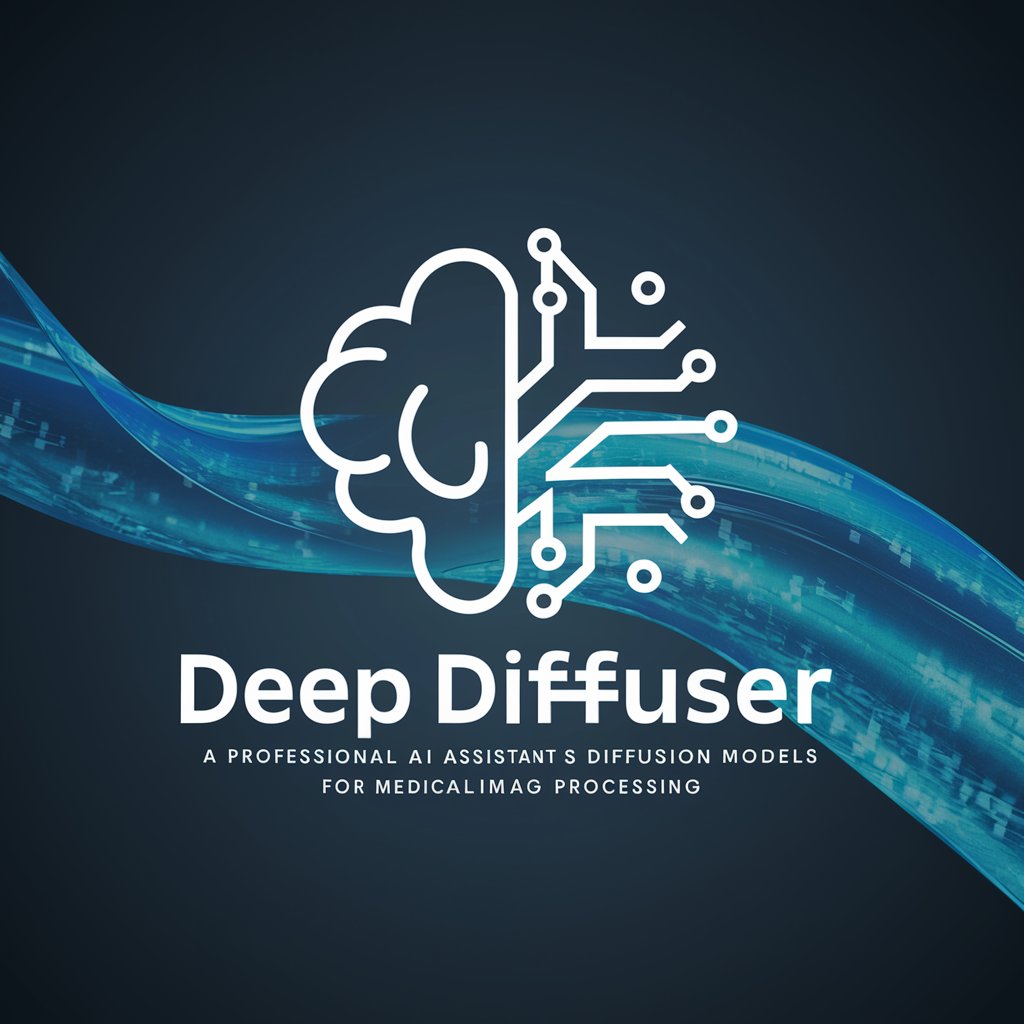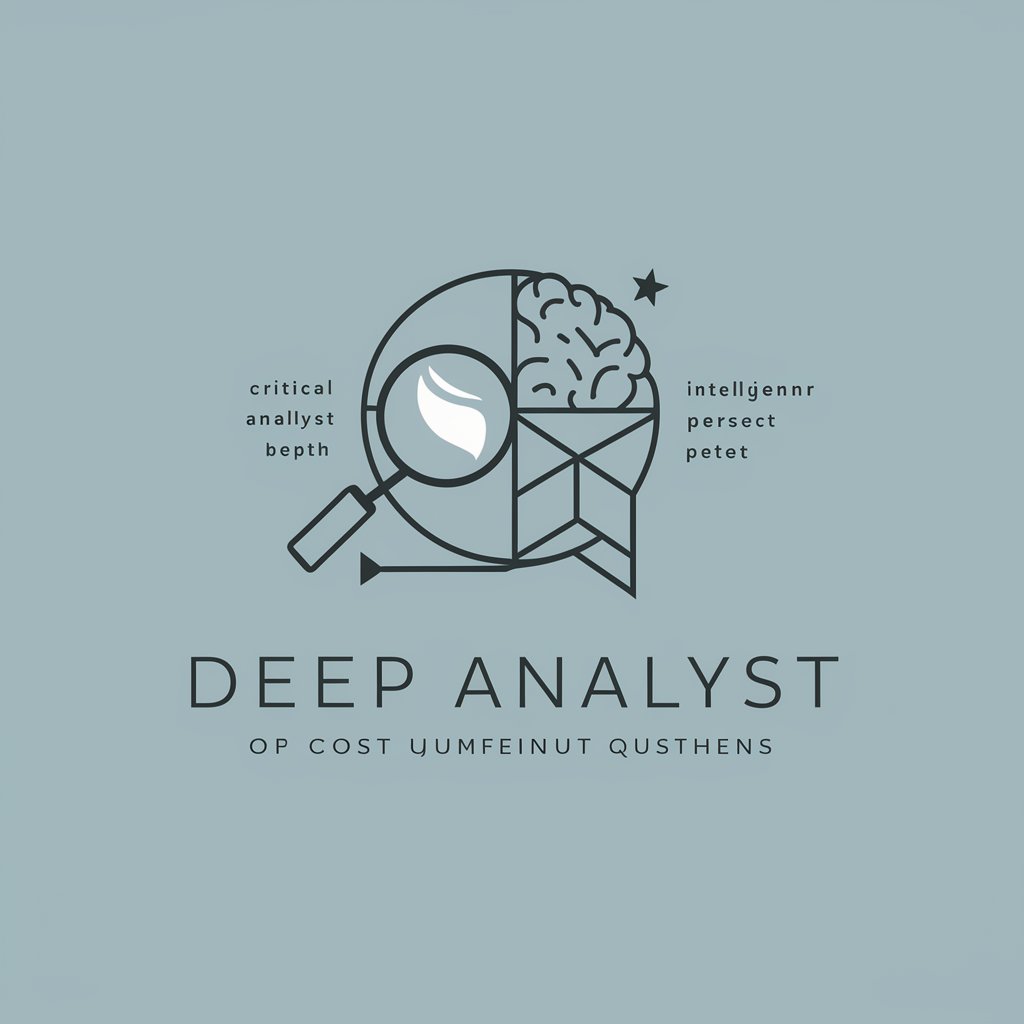Deep Diffuser - AI-Powered Medical Image Tool

Hello! How can Deep Diffuser assist you with medical imaging today?
Transforming Medical Imaging with AI
Can you explain how Diffusion Models enhance medical imaging?
What are the latest advancements in AI for healthcare?
How do Diffusion Models work in medical image processing?
What are the key benefits of using AI in medical imaging?
Get Embed Code
Overview of Deep Diffuser
Deep Diffuser is an advanced AI model designed primarily for the application in medical image processing, leveraging the capabilities of diffusion models. The core purpose of this AI is to enhance image resolution, reduce noise, and improve the overall clarity of medical scans such as MRIs, CT scans, and X-rays. By applying sophisticated diffusion techniques, Deep Diffuser can reconstruct high-quality images from lower-quality data, which is crucial in aiding accurate diagnosis and treatment planning. For example, in a scenario where an MRI scan is slightly blurred due to patient movement, Deep Diffuser can refine the image, enhancing clarity and detail which aids radiologists in identifying subtle pathological changes. Powered by ChatGPT-4o。

Core Functions of Deep Diffuser
Image Denoising
Example
Removing random noise from a series of PET scans.
Scenario
In a clinical setting, a PET scan exhibiting excessive noise can mask critical details necessary for accurate cancer staging. Deep Diffuser processes the noisy images to produce clearer, noise-free images, thereby assisting oncologists in making better-informed decisions regarding treatment approaches.
Image Super-Resolution
Example
Enhancing the resolution of a standard X-ray.
Scenario
A pediatric hospital receives low-resolution X-rays that are not sufficient for diagnosing fine bone fractures. Using Deep Diffuser, the hospital can enhance the image resolution, making the fine details of the bone structure visible and aiding in accurate diagnosis without the need for repeated exposures.
Image Reconstruction
Example
Reconstructing incomplete CT scans.
Scenario
During a CT scan, if a patient unexpectedly moves, the resulting images may be incomplete. Deep Diffuser can reconstruct these incomplete images, filling in missing details based on the available data, which allows for a comprehensive evaluation without subjecting the patient to additional radiation exposure.
Target User Groups for Deep Diffuser
Radiologists
Radiologists stand to benefit significantly from Deep Diffuser's ability to enhance image quality, especially under conditions where traditional imaging methods fail to deliver clear results. This can be crucial in diagnosing subtle or complex conditions such as small lesions or early stages of disease.
Oncologists
Oncologists require high-quality images to accurately stage and monitor cancer progression or regression. Deep Diffuser aids by providing enhanced imagery from existing scans, thus offering better visual resources for treatment planning and monitoring, particularly in dynamic and treatment-sensitive cases.
Medical Research Institutions
Research institutions involved in medical research, especially those working on new imaging techniques or computational image analysis, can use Deep Diffuser to improve the quality of their imaging data, facilitate higher accuracy in experimental results, and thus drive forward advancements in medical imaging technology.

Guidelines for Using Deep Diffuser
1
Access a free trial without registration by visiting yeschat.ai, avoiding the necessity for ChatGPT Plus.
2
Explore the interface to familiarize yourself with the available tools and settings specific to diffusion models for medical imaging.
3
Upload or select a pre-existing medical image dataset to begin experimenting with diffusion models.
4
Apply diffusion models to your dataset, adjusting parameters based on the specific requirements of your medical imaging task.
5
Analyze the output for improved diagnostic accuracy, and utilize the save/export functions to document your results effectively.
Try other advanced and practical GPTs
Deep Researcher
Empowering Research with AI

Deep Thinker
Elevate Inquiry with AI-Powered Analysis

Deep nuts
Empowering insights with AI mysticism.

Deep Analyst
Dive Deep with AI-Powered Analysis

Deep Listener
Fostering deep connections through AI-powered dialogue.

No Slang
Transform Informal to Formal Instantly

Deep Explorer
Harness AI for Deeper Insights

Deep Query
AI-driven Insights into State Space Models

Python Deep Learning Assistant
Empowering your AI journey with expert guidance.

Keep Calm
Direct Advice, AI-Powered Efficiency

Keep It Off
Maintain Your Weight with AI

Keep On Walking meaning?
Empower Your Words with AI

Frequently Asked Questions About Deep Diffuser
What is Deep Diffuser?
Deep Diffuser is an advanced AI tool designed to utilize diffusion models for enhancing and interpreting medical images, aiding in diagnostics and research.
How can Deep Diffuser improve medical image analysis?
By applying state-of-the-art diffusion techniques, Deep Diffuser can refine image clarity, enhance features, and generate hypothetical yet realistic medical imaging scenarios for educational and diagnostic purposes.
What types of medical images can be processed with Deep Diffuser?
Deep Diffuser is capable of processing a variety of medical images, including MRI scans, CT scans, and X-rays, adapting to different modalities for comprehensive analysis.
Is Deep Diffuser suitable for use in academic research?
Yes, its advanced processing capabilities make it ideal for academic researchers looking to apply cutting-edge AI in medical image analysis and computational imaging studies.
What are the system requirements for using Deep Diffuser?
Deep Diffuser requires a stable internet connection and is best used on a modern browser. While it handles heavy computations server-side, a faster local machine will improve overall responsiveness.
